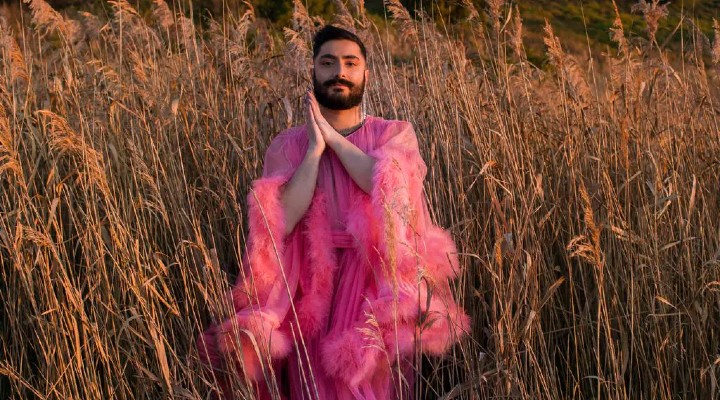Imagine the following. You have a special occasion coming up. You might have just graduated, gotten a promotion or a pay rise.
You spend hours daydreaming about what you might wear, how you want to feel and how excited you are to find that special piece. All that’s left to do is find it.
Imagine, next, entering a store and instantly feeling blocked, restricted: uncomfortable, unwelcome, unsafe.
Why? Because of your genitals.
This is how I and so many other trans and non-binary people feel when shopping not only for a special occasion but on any given day, even just buying new undies.
You see, fashion celebrates self-expression (at least as we know it to exist as an art form on the runway). It celebrates gender-bending, androgyny, masc and femme, strong and subtle. All of it has been triumphantly displayed to us by the likes of Gucci, Jean Paul Gaultier in his heyday and Vivienne Westwood, someone who consistently blurs those lines.
We’re much more likely to see division at a retail level. In fact, all we see is division. From as young as the baby section, clothes are separated into genders; kidswear is actually one of the most rigid categories in that way.
I came out as non-binary just short of a year ago. However, I’ve been shopping in the “women’s” department since I was 16. Sportsgirl was the first store ever to make me feel welcome and comfortable to try clothes with my girlfriends in our school spares. Sadly, this is only one of a handful of positive shopping experiences I’ve had in the past year of living as an out, non-binary human.
I’ve been told that a pair of shoes I wanted “don’t come in your size, sir” — even though I wear women’s sizes 39 to 40. I’ve been ushered over to the men’s section at Gucci when I asked to try on a pair of women’s sunglasses. Up the road at Christian Dior, before I’ve even stepped foot inside, I’ve been informed by security staff that “the men’s store is around the corner”.
I have no issue naming these stores as they are among the leaders that celebrate diversity on the runway. The same can not be said for the environments they cultivate in store.
Stores as safe spaces
While most high-street and low-end stores segregate the genders, I’ve found that staff are welcoming and refreshing.
Every Zara store I have ever walked into has no issue with me trying on womenswear in the women’s fitting rooms. (Previously, I would need to make my way up two flights of stairs to use the men’s change room, only to be stared at by the staff upon seeing my hands full of dresses). Kmart is the same, as is H&M.
It tends to be at the mid- to high-end stores where there is more discomfort from store staff. “Women’s” shoe stores make me nervous, whereas the David Jones shoe hall always feels like a safe space.
The Myer underwear department, however, proved another challenge.
I, like many of you, put on a little extra weight during Melbourne’s lockdown. So after I was invited to an event post-lockdown, I went shopping with my mum for a pair of Spanx. Already self-conscious in the build-up to this event, we finally found a pair.
“You should try them,” said Mum.
“No, Mum, it’s fine. Let’s just take them,” I replied nervously.
Mum went up to the staffer to ask if customers are allowed to try on Spanx on. The woman said yes, and before she could usher her in, Mum replied: “Great, my son would like to try them on.”
The woman looked me up and down and said, “I’ll have to get approval from a manager as men aren’t allowed in these fitting rooms.”
I didn’t have the desire to educate her in gender identity, so I stood there, uncomfortably, beetroot-red with embarrassment. She let me try them on, I bought them, then vowed never to buy shapewear in a store environment again.
As I left the department store, I couldn’t help but wonder how a trans woman may have felt in that experience. Or a younger, less confident non-binary human.
While I understand safety and privacy issues, and the need to keep predatory cis-het men away from half-naked women, it continues to surprise me when retail staff fail to read the room and misgender someone because they present with facial hair.
Change must come from the top
The staff can be friendly and welcoming, but it’s up to the brand managers, designers, training leaders and the fashion retail industry as a whole to evolve the system.
Degendering fashion is not about erasing gender. Rather, it opens a space for all humans of all gender identities to enjoy the power of self-expression without feeling like they have to compromise who they are or fear judgement.
Fashion at its core should be joyous, not anxiety-inducing.
Hope for the future
In the past six months, I have had incredibly warm and safe shopping experiences: buying a pair of Manolos at Harrolds on Collins Street, a set of high-waisted briefs at Bras’ n’ Things at Waurn Ponds in Geelong, a pair of mules at Billini in Sydney, special occasion outfits at Dion Lee in David Jones Sydney and Rebecca Vallance in the Strand Arcade. Every time I walk into a cosmetics department, I am greeted by young women eager to help a makeup junior like me.
This is what the future of fashion should be! This is what generations to come deserve. Retailers, take note.







